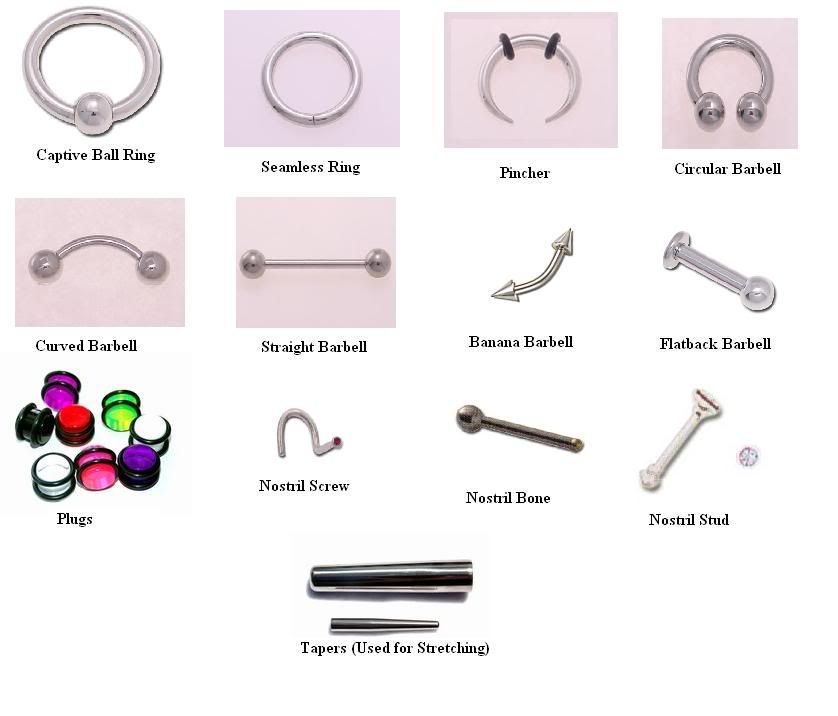Body piercing has become very popular, trendy and fashionable. Body piercing really varies with multiple hoops up, around, and inside the ear, or studs and rings sticking out of the tongue, eyebrow, nostril and lips. It seems that almost every part of the body is open to piercing. While parents shout "Yuck" or "Gross" and teachers ask "Why?", teens continue to gravitate toward body piercing. If you're like many teens who have thought about piercing you probably see them as a personal and fashion statement, a form of body art, and a chance to establish your individuality.
Piercing may be considered cool, but there are things you need to know before you get that piercing done. Piercing are susceptible to infection during the healing period. It is extremely important to take care of your new piercing in order to promote healing and prevent infection.
If you get your bellybutton pierced, you'll need to deal with a long healing time - sometimes as long as five months - as well as the challenge of clothes that create friction, build up moisture, and increase the chance of infection.
Don't make this a do-it-yourself project. Resist the temptation to resort to your friends or to do-it-yourself piercing to get the look you want. The result can be disastrous: wrong and often unsterilized equipment producing botched and unclean piercings, and inadequately pierced openings in the wrong areas of the body. That can mean infection and the formation of scar tissue.
Go for quality! If you decide to go ahead with body piercing, avoid bizarre jewelry such as re-engineered paper clips or safety pins. Instead, invest in quality jewelry such as surgical stainless steel, 14K gold, or titanium. The silver coating on regular costume jewelry can wear off and increase your chance of infection.
Piercing heals by the formation epithelial cells along the inside of the piercing to protect the body from the foreign object. These cells form a layer of skin along the inside of the piercing in about 6 to 8 weeks. Since the epithelial layer can easily be torn, do not force the jewelry to rotate without first applying warm water. The piercing may need to be soaked in warm water to allow the skin to expand. It takes six months to a year for the epithelial layer to toughen and strengthen. The entrance of the piercing will round inwards, like a donut hole.
Do not remove your jewelry for any length of time while it is healing, or it will close. After the piercing has toughened, it will not close but will shrink if the jewelry is removed.
All piercings produce a white discharge during the healing period. Symptoms of infection may include pain, swelling, inflammation (area feels warm or hot to the touch) excessive redness, and a discharge of yellow pus. If you suspect an infection contact your health care provider. DO NOT REMOVE YOUR JEWELRY. If the jewelry is removed the openings of the piercing will close and trap the infection, which can create an abscess. If you are going to get a new piercing, you must care for it properly.
Piercing may be considered cool, but there are things you need to know before you get that piercing done. Piercing are susceptible to infection during the healing period. It is extremely important to take care of your new piercing in order to promote healing and prevent infection.
If you get your bellybutton pierced, you'll need to deal with a long healing time - sometimes as long as five months - as well as the challenge of clothes that create friction, build up moisture, and increase the chance of infection.
Don't make this a do-it-yourself project. Resist the temptation to resort to your friends or to do-it-yourself piercing to get the look you want. The result can be disastrous: wrong and often unsterilized equipment producing botched and unclean piercings, and inadequately pierced openings in the wrong areas of the body. That can mean infection and the formation of scar tissue.
Go for quality! If you decide to go ahead with body piercing, avoid bizarre jewelry such as re-engineered paper clips or safety pins. Instead, invest in quality jewelry such as surgical stainless steel, 14K gold, or titanium. The silver coating on regular costume jewelry can wear off and increase your chance of infection.
Piercing heals by the formation epithelial cells along the inside of the piercing to protect the body from the foreign object. These cells form a layer of skin along the inside of the piercing in about 6 to 8 weeks. Since the epithelial layer can easily be torn, do not force the jewelry to rotate without first applying warm water. The piercing may need to be soaked in warm water to allow the skin to expand. It takes six months to a year for the epithelial layer to toughen and strengthen. The entrance of the piercing will round inwards, like a donut hole.
Do not remove your jewelry for any length of time while it is healing, or it will close. After the piercing has toughened, it will not close but will shrink if the jewelry is removed.
All piercings produce a white discharge during the healing period. Symptoms of infection may include pain, swelling, inflammation (area feels warm or hot to the touch) excessive redness, and a discharge of yellow pus. If you suspect an infection contact your health care provider. DO NOT REMOVE YOUR JEWELRY. If the jewelry is removed the openings of the piercing will close and trap the infection, which can create an abscess. If you are going to get a new piercing, you must care for it properly.












